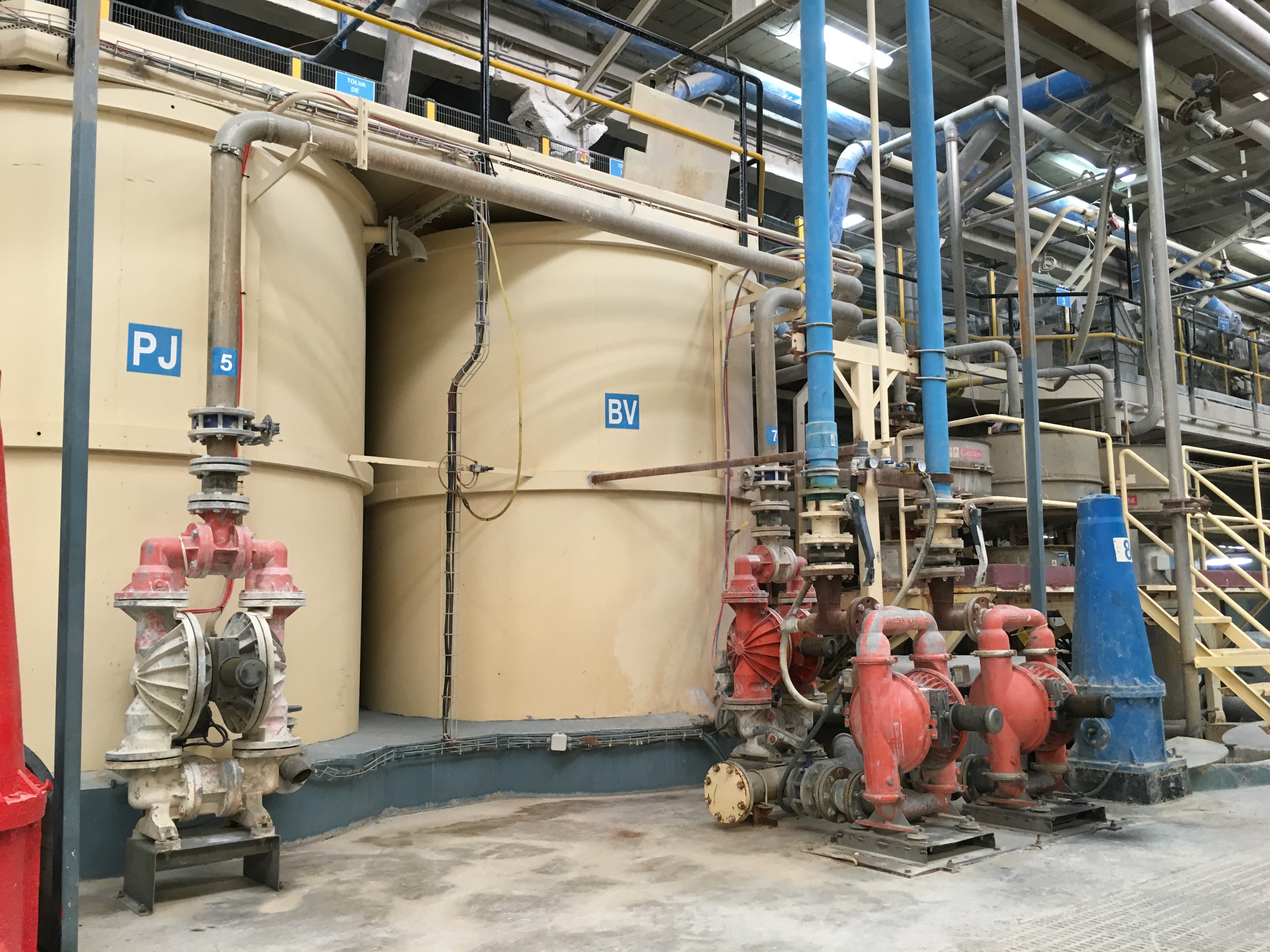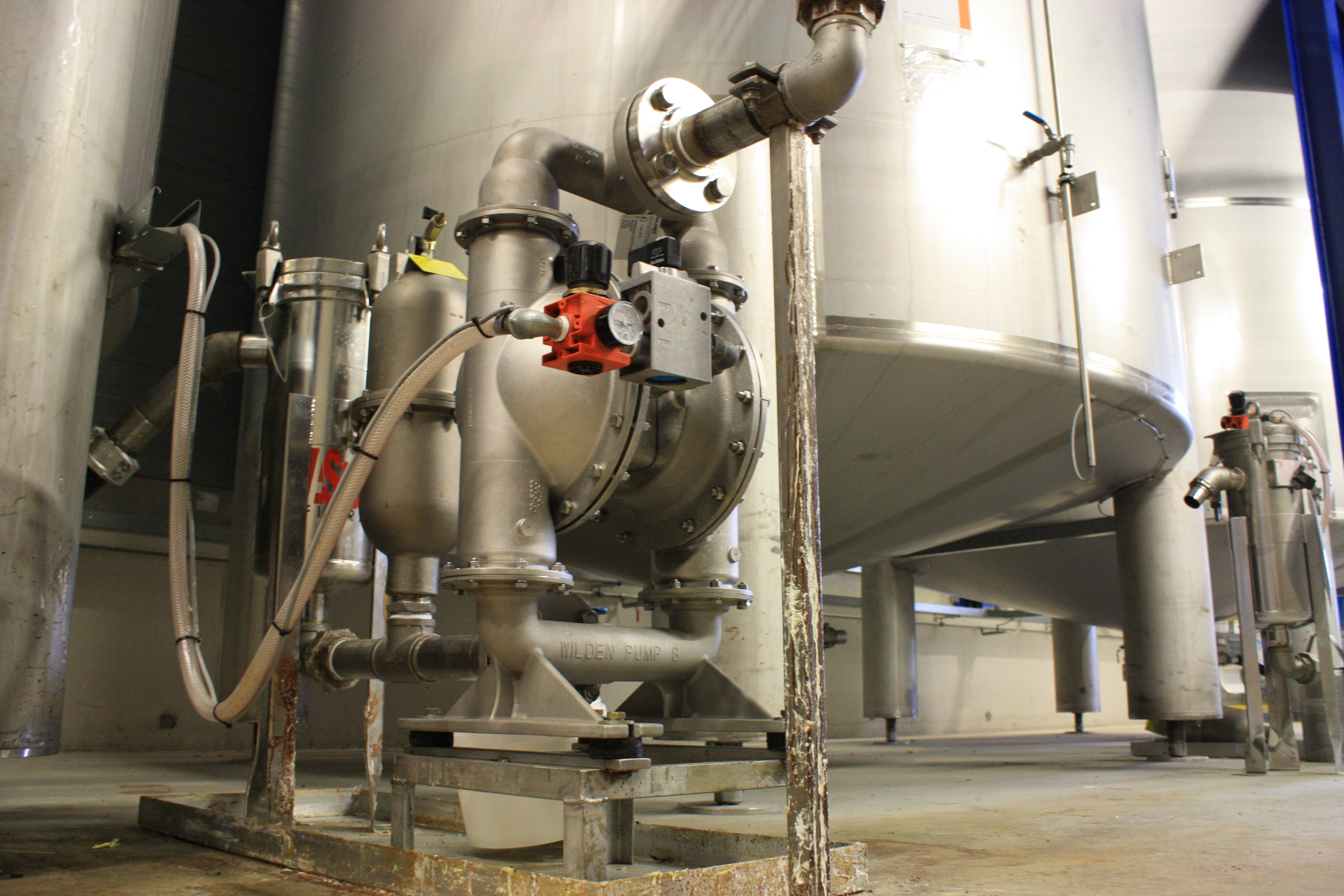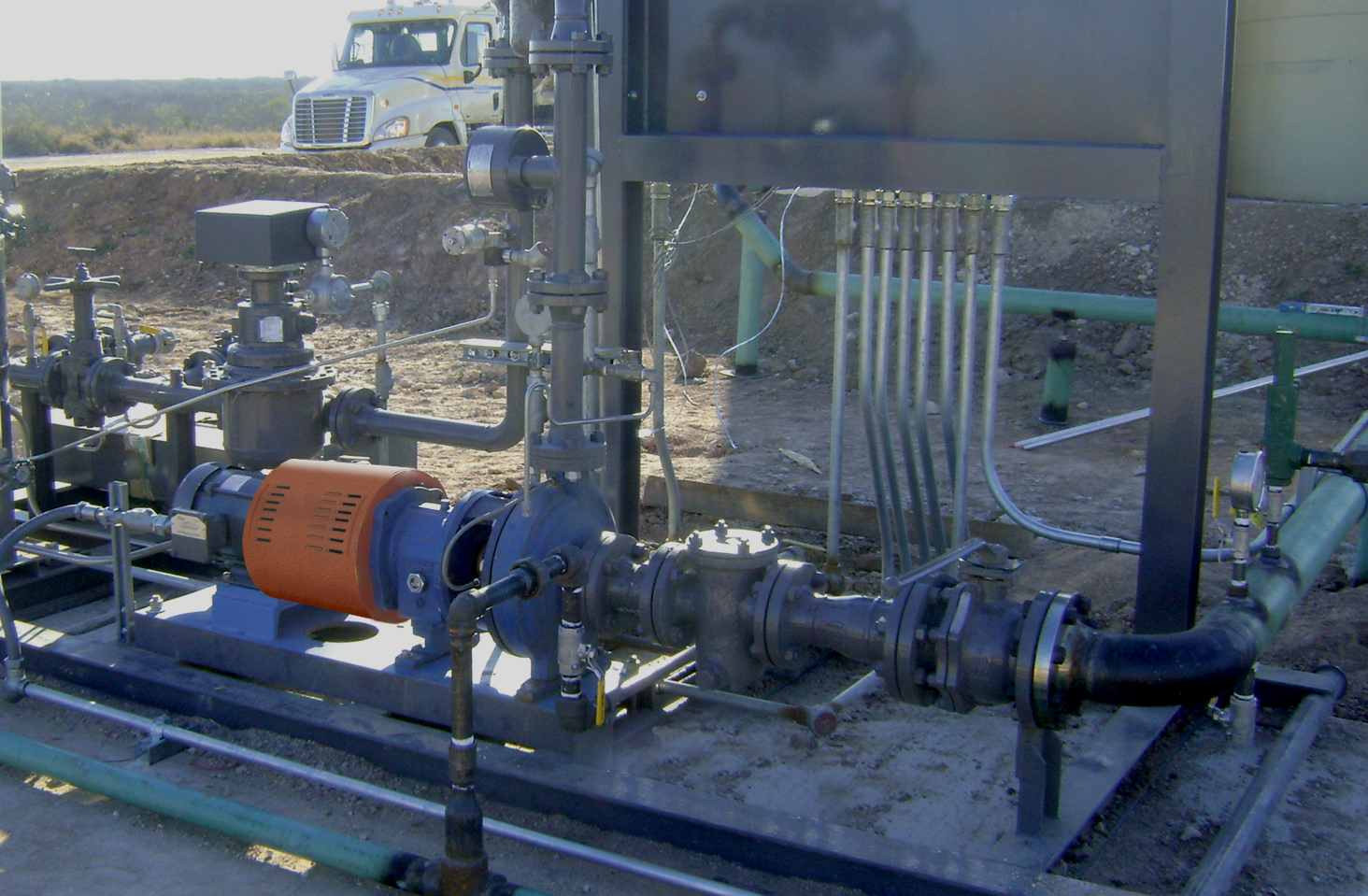


In industrial business-to-business equipment markets, manufacturers are struggling with energy price volatility, increasing costs of regulatory compliance, and public demands for improved environmental stewardship for scarce resources. Manufacturers need to find ways to adapt to these challenges, including investing in next-generation technologies.
Industrial producers, such as paint and resin manufacturers or oil-and-gas refinery operators, are investing in advanced technologies that will help them to achieve their business goals. Smart SCADA systems can reduce downtime through proactive monitoring. Energy-efficient pump technology delivers operating-cost savings, hedges against energy-price fluctuations and helps companies to meet their environmental stewardship goals by reducing carbon emissions.
However, any new technology can dramatically increase the complexity of business operations, at a time when cost pressures and economic headwinds threaten to curtail growth and profitability. Further, these technology investments require specialized knowledge and expertize to build, operate and maintain. Many industrial producers, like most businesses, face resource constraints and are operating with leaner staffing levels than ever before. As a result, they are finding that they don’t possess the in-house expertize to effectively select, build, operate and maintain increasingly complex equipment and systems, and often are forced to turn to third-party organizations with specialized knowledge for support.
Pump manufacturers in particular, along with their related distributors, engineering firms, consultants and other third parties, are increasingly stepping up to supply this critical applications expertize to their end-user customers. This white paper will illustrate how properly deployed applications expertize can unlock value for industrial producers, and makes the case that organizations that build superior applications expertize in their markets can gain a significant competitive advantage.
The challenge
Industrial manufacturers are facing an increasingly difficult business environment, one that is often impacted by these and other critical factors:
• Energy-price volatility. • Regulatory compliance legislation and associated costs. • Public/customer expectations for enhanced resource stewardship.
This white paper will examine all three challenges.
Energy-price volatility
Price volatility is defined in the energy industry as how quickly or widely electricity and/or natural gas prices change over a given time period. Prices are governed by supply and demand, where demand is impacted by factors such as weather patterns, economic conditions and consumer behaviour. In recent years, price volatility has increased in the energy market. To protect against this volatility, many companies “hedge,” or buy a commodity at a price that is locked in over a set period of time. While this may improve peace of mind for the operator, hedging is costly and doesn’t create value for the operator beyond reducing energy-cost volatility.
The severity, and potential impact of price volatility is such that in its 2015 report titled, “The New Normal,” the World Energy Council (WEC) opined that, “The uncertain impact of volatile energy and commodity prices…has now established itself as the number-one issue for energy leaders worldwide.”
The good news is that global energy leaders have recognized this challenge and are beginning to take measures to address it. According to Francois Moisan in WEC’s triennial 2016 report, “Energy Efficiency: A straight path towards energy sustainability,” “The introduction of energy-efficiency policies and measures has been growing fast around the world. The increasing number of countries with an energy-efficiency law…signifies a strengthening and consolidation of the industrial commitment to energy efficiency.”
The report does also indicate, however, that “despite the significant advances, much more can and should be done to improve the efficiency of energy production and use.” This is extremely noteworthy for industrial manufacturers because, as the WEC also notes, “industrial electric motors and electric motor-driven systems consume almost half of the total electricity and account for 70% of the total (amount of) electricity consumed in industry.”
For many industrial companies, where energy is a significant portion of operating costs, price volatility will continue to be a challenge. These companies will be self-served to evaluate energy-saving technology, but will only reap the greatest rewards if they do so by taking into account the intricacies of their equipment in the specific applications in which they operate. Only by developing and using the proper applications expertize will they be able to identify and choose the technology that is best suited to mitigate the cost risks associated with energy volatility.
Regulatory compliance
Regulatory compliance is by definition a necessity for businesses in the modern world. These laws collectively shape the environment in which businesses operate. The number of federal regulations in the U.S. has been growing steadily for several decades, requiring investments by many businesses in order to maintain compliance. In fact, a study by George Mason University shows that “the effects of federal regulation on value added to the (U.S.) GDP for a panel of 22 industries…over a period of 35 years…dampened (GDP by approximately) 0.8% per year since 1980, eliminating $4 trillion in growth by 2012.”
Two prominent examples in the industrial-manufacturing universe are the motor-efficiency regulations that have been developed by the U.S. Department of Energy (DOE) and the International Electrotechnical Commission (IEC) in Europe. The bottom line is that regulations are an unavoidable requirement for doing business in almost any jurisdiction in the world. Advances in technology that have been geared toward meeting the demands of a stricter regulatory environment will help industrial producers to navigate the compliance realm, but will be optimized only if they are applied with the appropriate applications expertize. In fact, the misapplication of a pump (e.g., incorrectly sizing the pump for its job) will likely lead to far greater energy consumption than can be saved from improvements in motor technology.
Expectations for resource stewardship
A phrase that has gained in stature over the past two decades in all forms of business is “corporate social responsibility,” or CSR, which is commonly characterized as “business practices involving initiatives that benefit society.” An article in the June 18, 2016, issue of the International Journal of Business and Management titled, “Corporate Social Responsibility and Consumer Buying Behavior in Emerging Markets,” highlighted that “consumers now want companies to behave ethically in addition to providing quality product[s]...”
The obvious implication is that those companies that are perceived to be inattentive or irresponsible stewards regarding shared resources, for example, community water supplies, risk a political and social backlash that could impact the company’s standing and ability to do business in the communities in which it operates.
Therefore, it shouldn’t be surprising that a report from Harvard Business School titled, “The Impact of Corporate Social Responsibility on Investment Recommendations,” revealed that “recent research shows spending money on corporate social responsibility is no longer seen as a detriment to a company’s profitability. Stock analysts now view such expenditures as essential to a company’s long-term brand and value.”
In short, to improve their CSR standing, more and more companies are investing additional time and resources toward incorporating new technologies, changing operating practices and even adjusting business strategies in order to better assuage the corporate-responsibility demands of the buying public. Indeed, these resources can only be optimized by developing and applying expert knowledge of the business, its systems and the local environment in which it operates. Businesses that develop and use this knowledge will help satisfy the needs of the public while achieving positive outcomes in resource stewardship.
The solution
So how do industrial manufacturers address the challenges of price volatility, regulatory compliance and resource stewardship, and still successfully achieve their business goals? Many companies are turning to technology for assistance.
In a February 2013 article titled, “The Dawn of the Smart Factory,” IndustryWeek magazine detailed a looming manufacturing nirvana known as the “Smart Factory.” This factory of the future will be “a paradise of efficiency where defect and downtime, waste and waiting are long-forgotten issues of a long-forgotten age.” The driving force behind this phenomenon would be plant managers and chief intelligence officers who work together to create a seamless blend of data and production that will “illuminate every turn of every machine, every cut of every blade, every move of every piece in its global dance to deliver.”
While the hyperbole in this article is heavy, the article’s basic premise was echoed in a 2015 study by MarketsandMarkets, a publisher of premium market-research reports. In its piece titled, “Smart Factory Market by Technology, Component, Industry, and Geography – Global Forecast to 2022,” MarketsandMarkets researchers found that the smart-factory market, in terms of value, is expected to reach $74.8 billion by 2022, with a compound annual growth rate (CAGR) of 10.4% between 2016 and 2022.
“The emergence of smart factories can be seen from the period of change toward cohesive control of the machineries, processes, and resources with local intelligence,” read the report. “The increasing focus on saving energy and improving process efficiency, along with the integration of engineering and manufacturing by the adoption of IoT (the ‘Internet of Things’) is expected to foster the growth of the smart-factory market.”
While the smart-factory operating principles promise to be a boon for industrial manufacturers who implement them, they will raise the complexity of the operation, which poses its own set of unique challenges. In fact, according to strategic-management consulting firm A.T. Kearney’s “How Much Does Complexity Really Cost?” survey of the top 30 companies in Germany, a reduction in operational complexity would boost earnings by more than €30 billion and increase earnings before interest and taxes (EBIT) by 3% to 5%.
The ultimate challenge for a manufacturer is to learn how new technologies can improve his or her operations and find the best, most efficient way to extract the benefits. This must be done while simultaneously not allowing the inherent complexities of these new systems to hinder or raise the cost of business processes. This is where the accumulation and deployment of applications expertize becomes immensely critical.
In fact, Skip Giessing, President of DXP Enterprises’ Rotating Equipment Division, a company that has been supplying industrial pumps since 1908, sees no reason that the demand for and importance of applications expertize won’t continue to grow in coming years.
“I believe there will be an increased demand for outstanding supplier applications expertize as suppliers and manufacturers work together to tie technology to process-equipment networking, proactive health monitoring and reliability,” he said. “The huge customer spend reduction will come when all the key equipment within a manufacturing plant is interconnected and ‘talking with one another’ and adjusting to changes, etc. Customers will need to know and understand how changes affect equipment performance and reliability and how and what to do in order to maintain maximum productivity through reliable uptime and equipment efficiency.”
So, what exactly is applications expertize? At its most basic level, it is specialized knowledge pertaining to the use of certain products in specific conditions. This knowledge can be used to create better business outcomes and, therefore, be the foundation for gaining a competitive advantage. As the complexity of the production system increases, the value that can be unlocked from applications expertize also increases.
As the above graphic illustrates, the type of expert knowledge varies across the value chain, so there are ample opportunities for increased collaboration among pump manufacturers and distributors, and among distributors and end users, to strengthen expert knowledge and enhance value creation for all involved parties.
Tools for managing costs
To better understand how applications expertize can help the operator realize the importance of improving equipment productivity, efficiency and effectiveness, ExxonMobil produced a Technical Help Desk Tip that spelled out the ways to improve what it called “Overall Equipment Effectiveness,” or OEE. OEE is measured as a ratio of a plant’s actual output compared to optimal output, using the equation: OEE = Availability x Performance x Quality, where:
• Availability represents how frequently a machine is available for its intended use, which can be affected by equipment failure, unplanned maintenance, material shortages and changeover times. • Performance is a measure of speed loss, or the number of units a machine is rated to produce per hour versus the number of units it actually produces. • Quality represents the amount of scrap material produced by a particular machine, with rejected materials, products that fall short of quality standards and any items that require rework all affecting overall quality.
The conclusion in the article is that the operator “can realize significant efficiency gains by calculating OEE for particular pieces of equipment throughout the plant.” Doing this will also make it easier to identify where particular pieces of equipment are operating to expected standards and norms for efficiency and reliability, and makes the operator aware of the areas where operational improvement will result in the greatest recovery of efficiency.
Another useful tool for operators is the total life-cycle cost (LCC) model for pump technologies. Many factory managers consider only the upfront capital cost of a pumping system in their decision process, which can end up being a costly choice for their business in the long run. According to the Hydraulic Institute’s “Pump Life Cycle Costs: A Guide to LCC Analysis for Pumping Systems” manual, which it developed in conjunction with Europump, “the single most important factor in minimizing a pumping system’s LCC is proper pumping system design.”
Other design factors that impact the pumping system’s total LCC include pipe diameters, lengths, bends, elbows, fittings and valve types, which can increase friction loss. These factors include the correct sizing of the pump, as selecting a larger pump than necessary just ‘to be safe’ will result in the pump operating away from the best efficiency point and requiring more energy consumption; the use of throttling valves to control flow rather than pump speed; and application requirements such as flow rate head pressure and fluid viscosity. These are all areas where applications expertize can aid the designer and installer of the system. In fact, for this reason, many manufacturers look to third-party distributors, consultants or pump manufacturers for help in system design and pump selection.
Conclusion
Industrial manufacturers may feel that they are being bombarded from all sides when they are confronted with growing demands to better confront and control energy-price volatility, meet the strict tenets of expanding regulatory-compliance legislation, and satisfy both the public and their customers who are ratcheting up expectations regarding improving environmental stewardship. While these responsibilities can be daunting, they are also a significant, and necessary, part of the cost of doing business in today’s manufacturing environment.
Manufacturers must satisfy these demands while simultaneously running a profitable business. With that in mind, it’s becoming increasingly apparent that the manufacturers who will be successful in the future will be the ones who develop and utilize applications expertize, especially when selecting critical pumping technologies and systems. To do this, industrial manufacturers and their channel partners (the distributors, consultants and engineering firms that work hand-in-hand with them) are committing to building applications expertize in their industries. This expertize, when thoughtfully applied to essential system challenges, can unlock significant value for the manufacturer and the end user alike. Therefore, companies that build superior applications expertize will create a significant competitive advantage in the marketplace in the future.






